Rapa Nui, the world’s most remote island
Rapa Nui, or Easter Island as it's also known, is a tiny island in the vast Pacific Ocean. It's shrouded in mystery and has a unique and absolutely fascinating culture. Rapa Nui is like an open-air museum, full of archaeological sites, and the iconic moai, gigantic figures carved from volcanic stone, are the island's symbol. But that's not all! You'll also find extinct volcanoes, underground cave systems, turquoise waters for swimming and endless hiking trails! Join me on a wondrous journey and discover the mysteries of this extraordinary island.
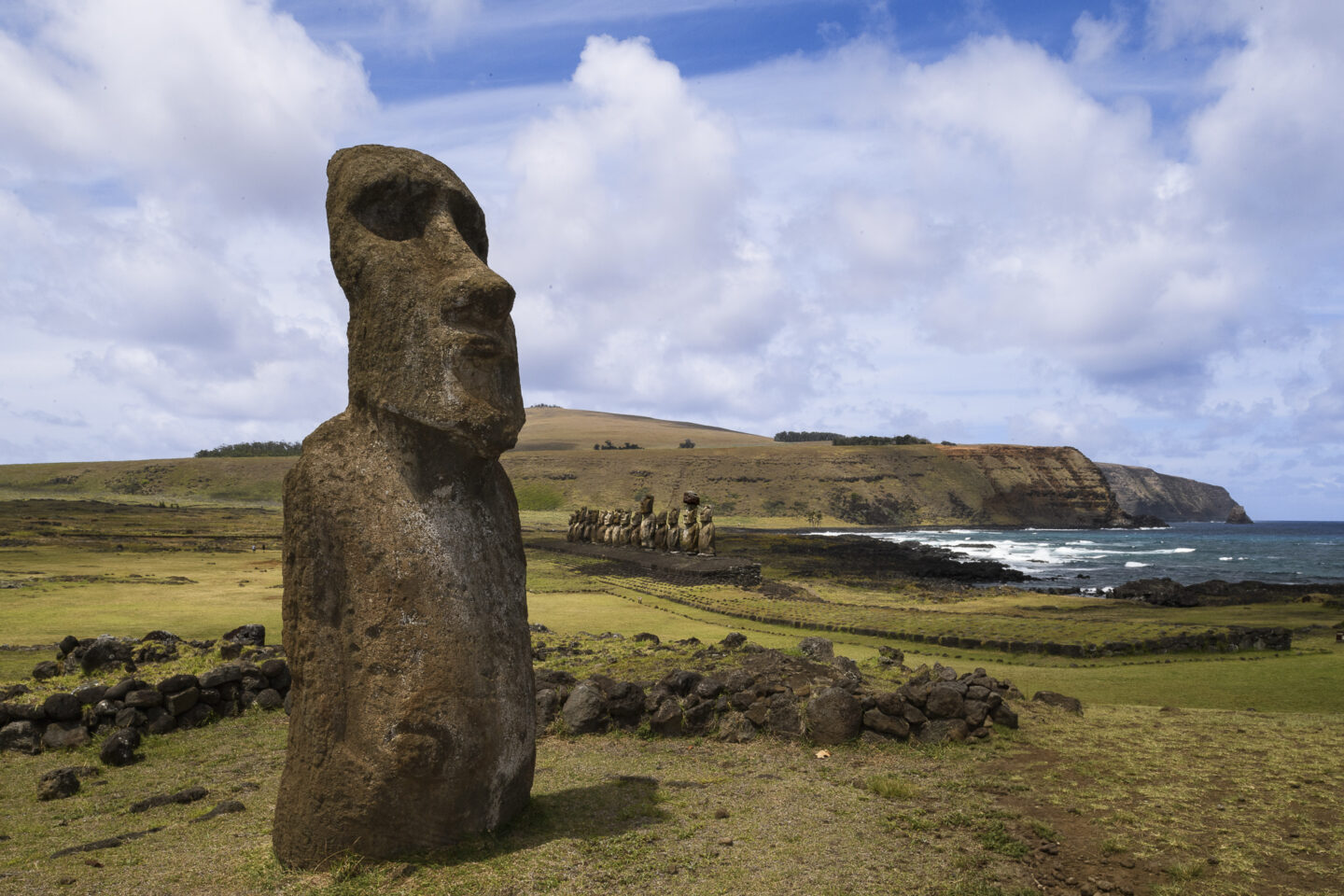
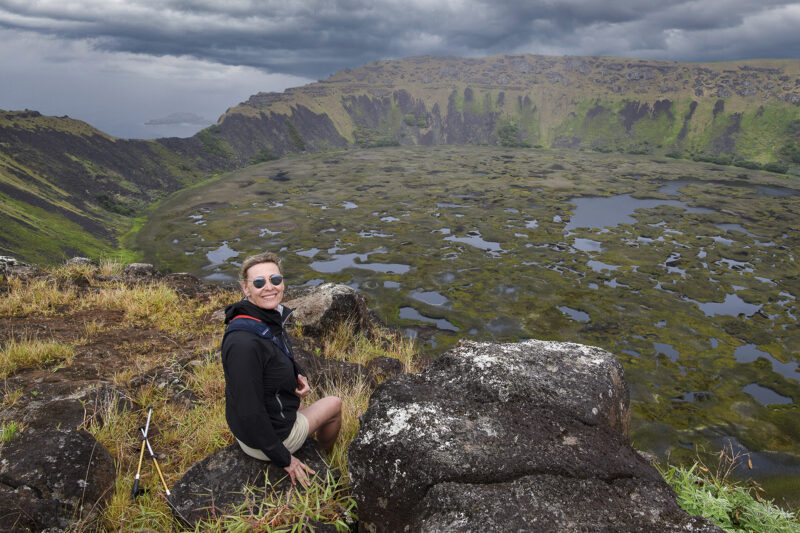
Where is Rapa Nui located?
Rapa Nui lies in the South Pacific, 3,522 kilometers from the South American continent and 4,231 kilometers from Tahiti. You can only reach the island from these two places, adding an element of adventure just to get there! While geographically part of Oceania, it falls under the jurisdiction of Chile. The island has 3,500 inhabitants, most of whom live in the capital Hanga Roa.
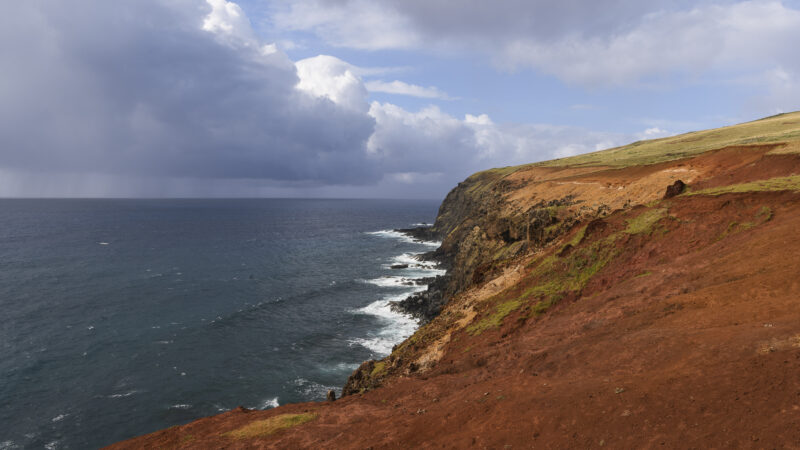
A history shrouded in mystery
We don't really know much for sure about the origins and history of Rapa Nui. All we really have are the stories of the first European explorers who discovered the island in the 1700s.
From South America or Polynesia?
There are two ideas about the first people who settled on Rapa Nui.
So, the first idea is that people from South America sailed across the Pacific Ocean and found the island by chance. But then DNA research showed that the Rapa Nui had Polynesian DNA, not South American.
Then, there's another theory that between the 6th and 8th centuries, King Hotu Matu'a of the island of Hiva – which is probably the Marquesas Islands – arrived with 1,000 people from his tribe. He'd brought everything needed to start a new civilisation. The king landed on Anakena beach, where he found an island covered in lush vegetation. He called the island Te Pito or Te Henua, which means 'the navel of the world'.
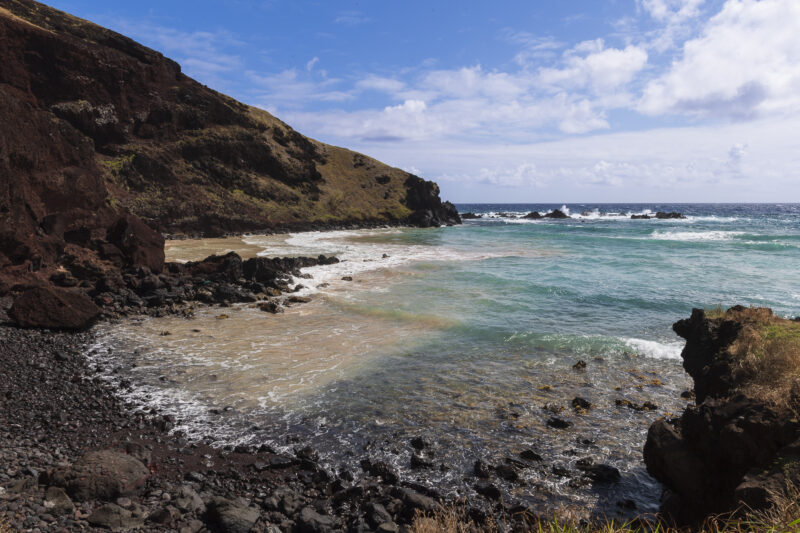
A brief timeline
The first people spread across the island and eventually formed 12 tribes. It is thought that Rapa Nui became overpopulated between the 15th and 18th centuries, which led to food shortages and conflict between the tribes. In this atmosphere, Jacob Roggeveen, a Dutch captain of the West India Company, arrived on Rapa Nui on Easter, 1722. He christened the island Easter Island in honour of the occasion. He left the next day, and no one set foot in Rapa Nui again until 1770. This is when a Spanish expedition from Peru claimed the island for the Spanish crown and changed its name to San Carlos Island.
Back in the 19th century, Rapa Nui got raided by Peruvian smugglers and slavers, who captured most of the indigenous population. Some of them managed to escape, but upon their return to the island, they brought with them diseases that decimated the population. After the slavers came the missionaries. Then, in 1870, the Frenchman Jean-Baptiste Dutrou-Bornier claimed the island for himself, exiled most of the locals to Tahiti and started a sheep farm. He was assassinated seven years later and by then, only 111 of the native population still lived on Rapa Nui.
In 1888, Chile annexed the island and leased it to a Scottish-Chilean sheep farm. Seventy thousand sheep roamed free on the island, while the island's inhabitants had to stay within the borders of the main town, Hanga Roa. When the wool trade ended in 1953, there was a growing sense of identity and independence. The residents of Rapa Nui eventually gained some form of self-government and were allowed to elect their own mayor. It wasn't until 1966 that they were finally granted Chilean nationality.
Where did the name Rapa Nui come from?
As with many things related to this mysterious island, it's not clear where the official name Rapa Nui comes from. It's a Polynesian name that the island's inhabitants adopted in the mid-19th century. The island Rapa Nui, which means 'Big Rapa' in Polynesian, is said to be similar to Rapa Iti, or 'Little Rapa'. This small island in the southern archipelago of French Polynesia is also known as Oparo. Some say Rapa Iti might actually be the magical island of Hiva, where King Hotu Matu'a came from.
Moai, giant figures in volcanic stone
The moai of Rapa Nui are massive figures carved from the volcanic rock of Rano Raraku. The first moai were smaller in size with wide heads and short ears.
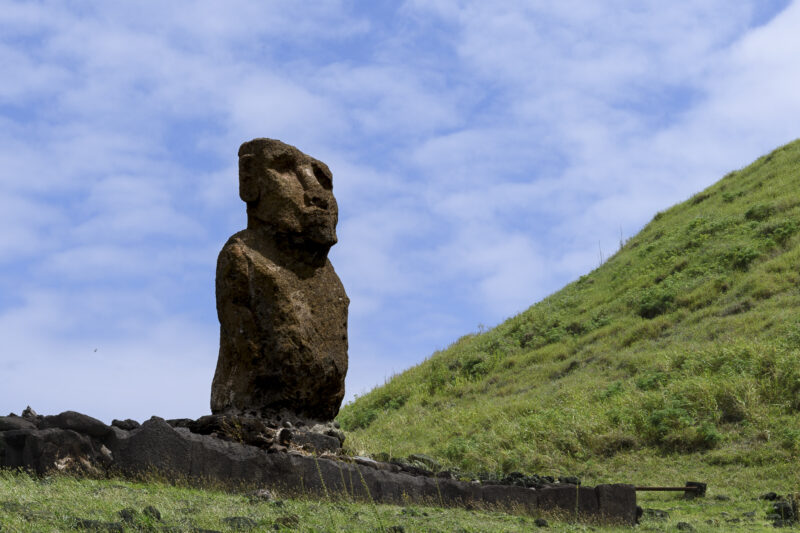
Over time, the proportions of the statues changed, and they got longer bodies, longer ears and a sharp nose.
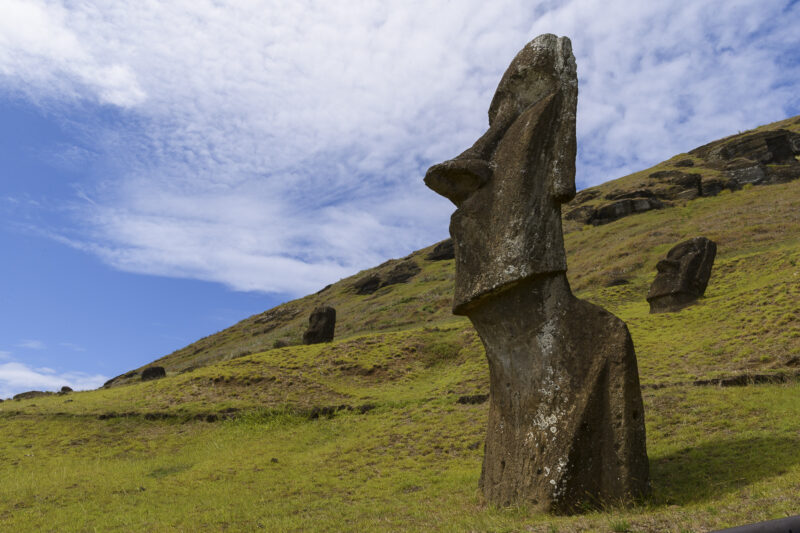
The average moai is about four metres high, but there are some that are much taller. The most impressive but unfinished moai is in the quarry of the Rano Raraku volcano and it's 22 metres long.
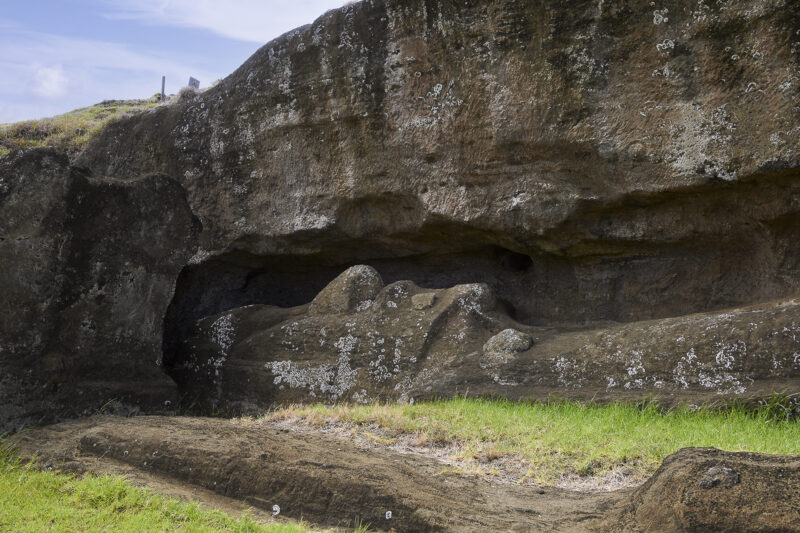
Ancestors' mana
Across all of Polynesia, ancestors are a big part of spiritual life. According to the culture, a person's spiritual energy, or mana, carries on after death and can even influence the lives of their descendants. So, when a leader on Rapa Nui died, the clan members would place a statue on a ceremonial platform, called an ahu. The statues would project the mana of the deceased leader onto the village, providing protection for the tribe.
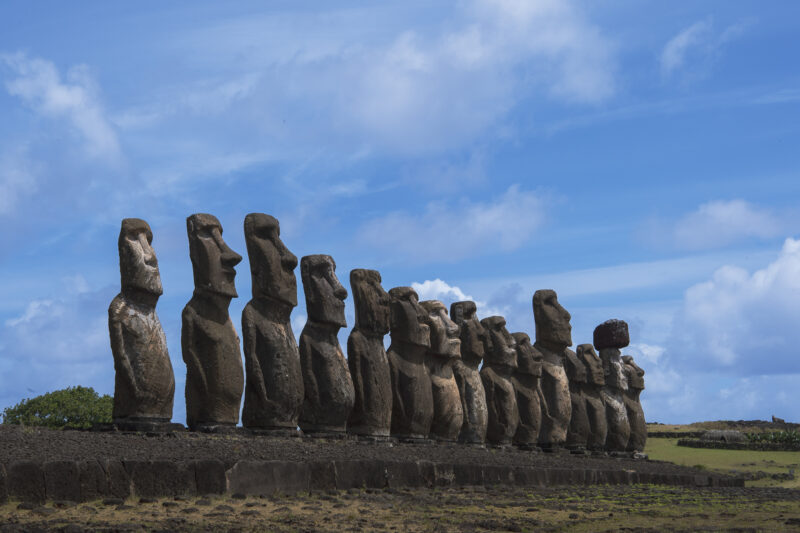
The eyes
The moai isn't actually finished until it's been placed on its ahu, the ceremonial altar. That's when the eye sockets are carved and, at the end of a ritual, the eyes are inserted. They're made of white coral with pupils of obsidian. It's at this moment that the statue really comes to life and mana is projected onto the community.
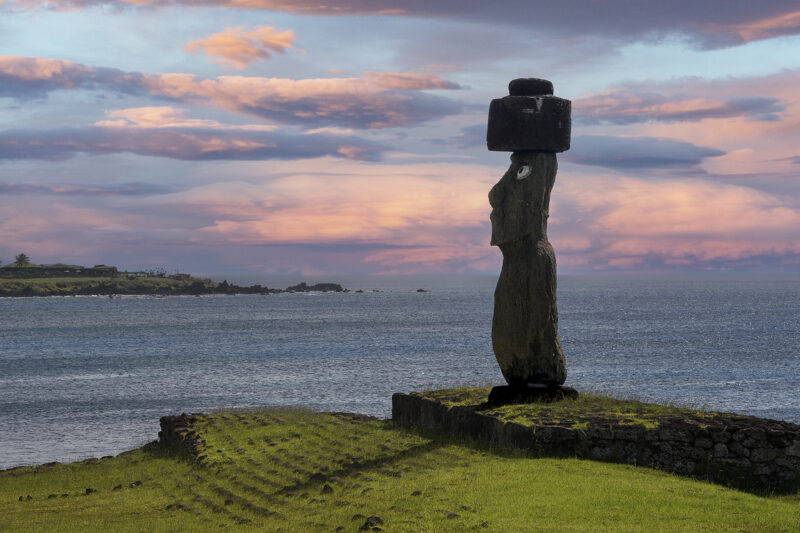
The Pukao
A number of the moai have a pukao atop their heads. This is a cylinder made from red rock that comes from the crater of the Puna Pau, and the red colour of the rock represents the mana. But nobody actually knows what the pukao means. Some people think it's ceremonial headgear, while others believe it reflects long hair tied up in a bun. The pukaos can weigh an astonishing 5 to 11 tonnes and stand nearly two metres tall!
From the quarry to the ahu
The moai were carved in the quarry and then taken to the tribe's ahu, and no one knows how this was done. The road to be travelled was sometimes 11 km long, and some say it was done using rollers made of tree trunks. Others think that long ropes were attached to the statue and, when both sides pulled alternately, the moai moved as if it were walking along a made-up track. And you can still see traces of these tracks around the island.
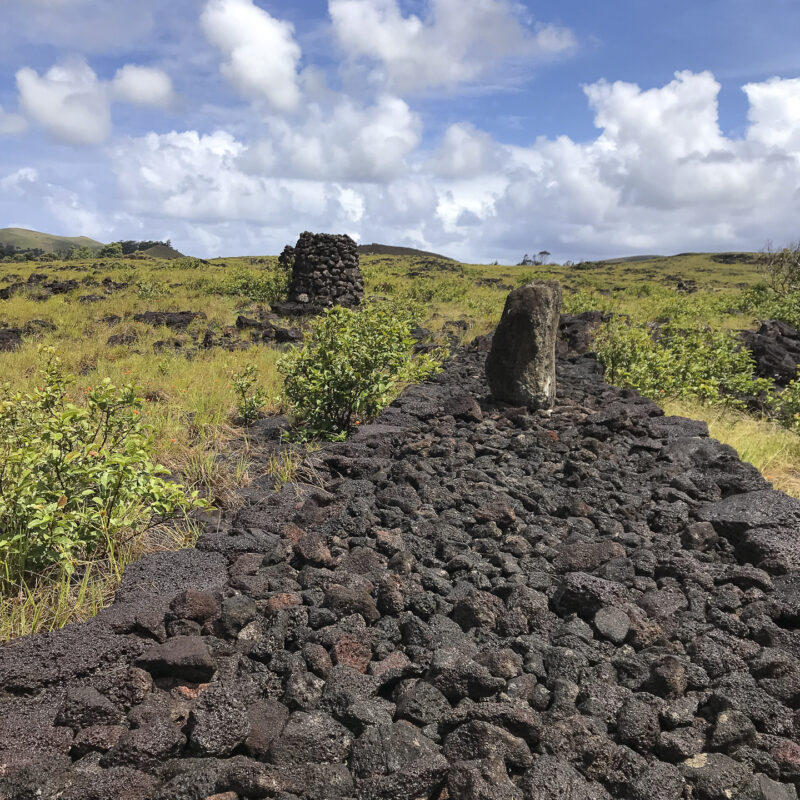
Who took down the moai?
When James Cook came ashore to stock up on supplies in 1774, he found an almost deserted island. Many of the moai had fallen over and the people lived in harsh conditions.
This suggests that the Rapa Nui themselves knocked down the statues. There wasn't much food around between the 15th and 18th centuries, which led to fights between tribes. The rival clans took the moai from their opponents' ahu so that the statues couldn't protect their descendants anymore. They scratched out the eyes and took off the pukao so that the mana drained from the statues. Furthermore, people started to think that the moai weren't as powerful as they were once thought to be. It seemed like the gods were no longer looking out for the people. The last time someone saw a standing moai was in 1838.
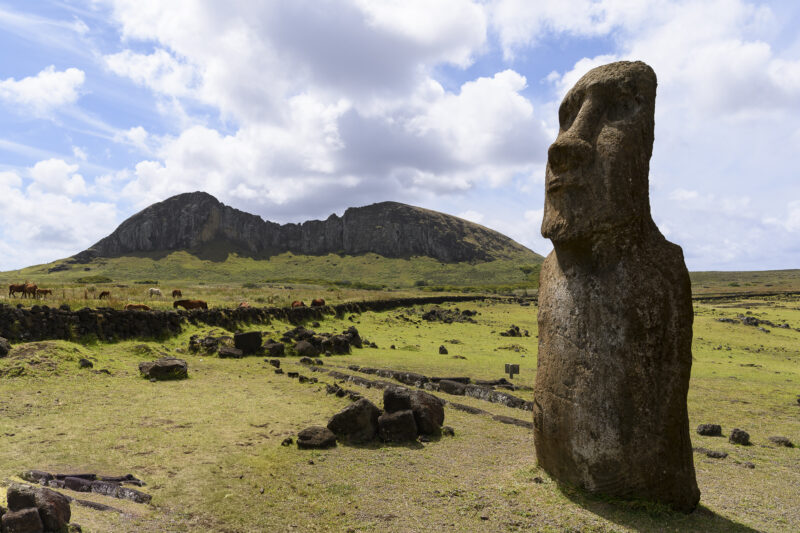
The start of the restoration
Back in 1956, Norwegian explorer Thor Heyerdahl was determined to test a theory about how the moai were pulled up straight. A team of 12 Rapa Nui men, using just wooden poles, stones and ropes, put the first moai back on its ahu on Anakena beach in 18 days. William Mulloy, an American anthropologist who was part of the expedition, was encouraged by the result and went back to the island in 1960. He started working with 25 Rapa Nui to restore the moai and other archaeological sites.
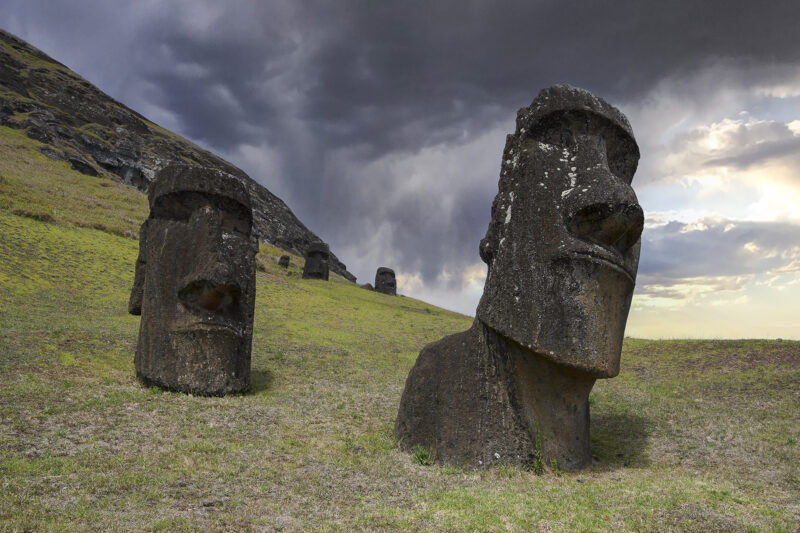
Rapa Nui must-sees
The stunning island of Rapa Nui will delight anyone with a passion for nature and culture. Here are the must-sees of this magical island.
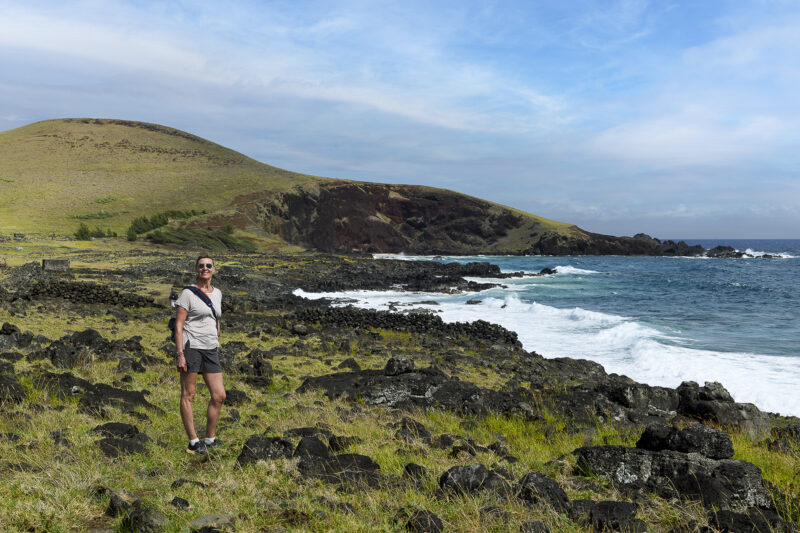
Must-see 1: the volcanoes
Rano Raraku, the quarry of the moai (H5)
Rano Raraku volcano is a really important part of Rapa Nui culture because it's the place where the moai were carved. The rock here is Lapilli tuff, a special kind of rock that's much softer than the usual basalt.
Rano Raraku is 180 metres high, and the view from the top is amazing. The volcano has a big crater with a freshwater lagoon inside.
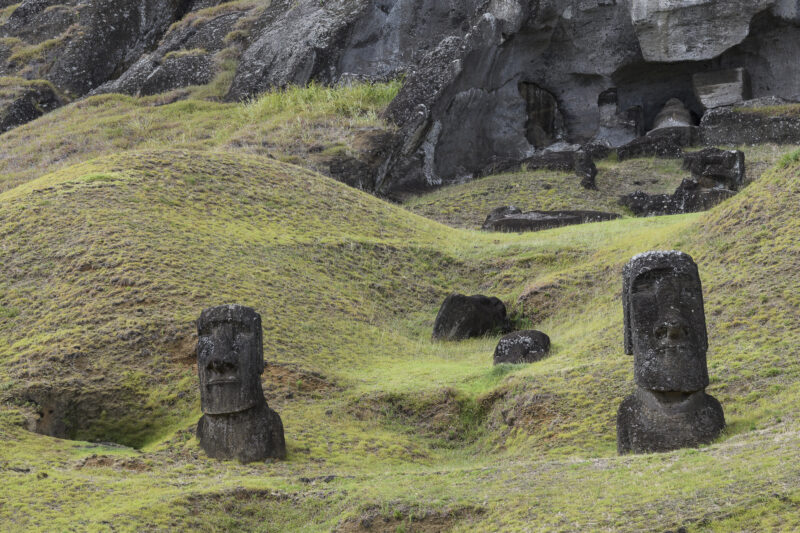
Rano Kau
Rano Kau is one of the three volcanoes that formed Rapa Nui. This extinct volcano is located in the south-east of the island where most of the population lives. It has the largest crater on the island, which was formed when the top of the volcano collapsed. The crater has a diameter of 1.6 kilometres and is 200 metres deep. Inside the crater, there's a lake that's partially silted up and overgrown with totora – the same kind of reed that you find in Lake Titicaca in Peru. There are quite a few archaeological sites on the flanks of Rano Kau, including the ceremonial village of Orongo.
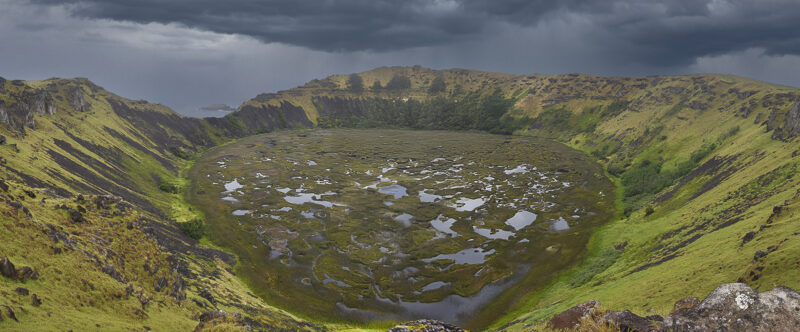
Poike
Poike is Rapa Nui's oldest volcano. At 370 metres high, it is the tallest on the island and its flanks form a small peninsula at its easternmost point. The site is subject to heavy erosion from wind and water, and has been abandoned for centuries, leaving nature untouched.
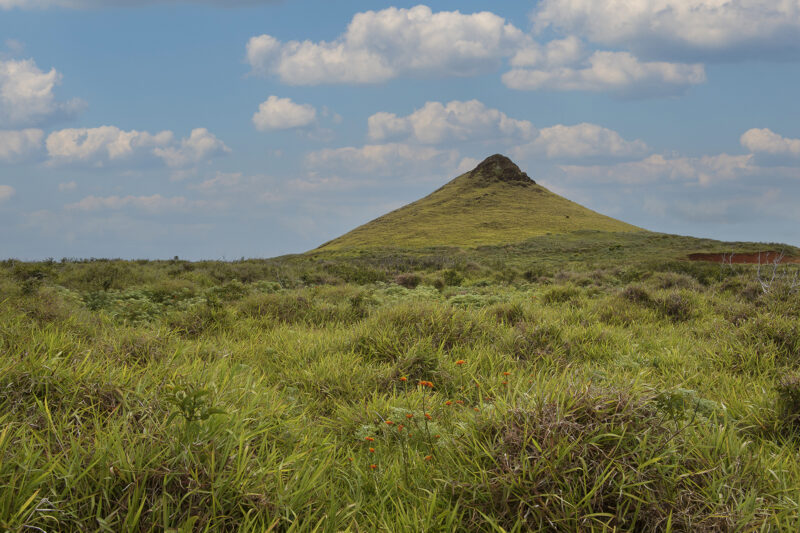
Puna Pau, the pukao quarry
The Puna Pauro Volcano is well known for its red scoria, a type of red volcanic rock that's both porous and easily sculpted. For the Rapa Nui people, the colour red has a lot of meaning, as it's linked to their rituals and mana. So, it makes perfect sense that the pukaos of the moai were carved from this rock.
Must-see 2: the moai
Rano Raraku
Rano Raraku volcano is one of the island's most significant archaeological sites. For 500 years, most of the nearly 1,000 maoi discovered were carved from the lava rock here. It seems that the quarry in the volcano was suddenly abandoned because a large number of unfinished statues are scattered everywhere.
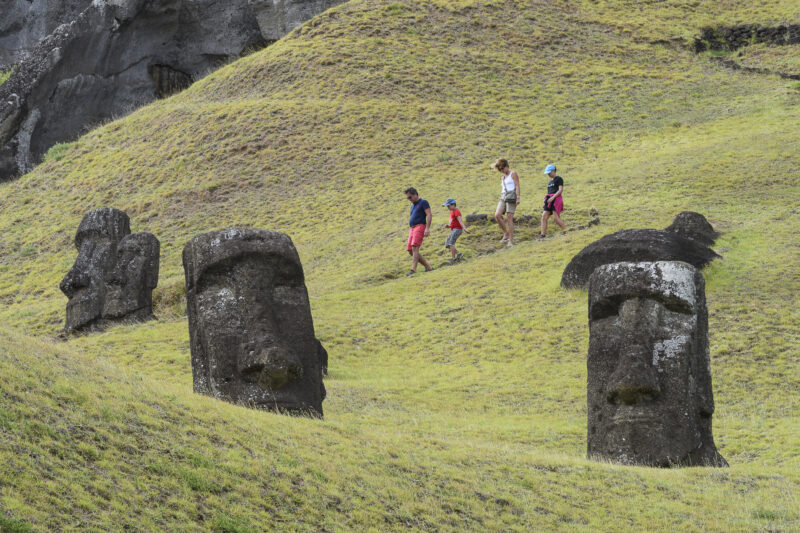
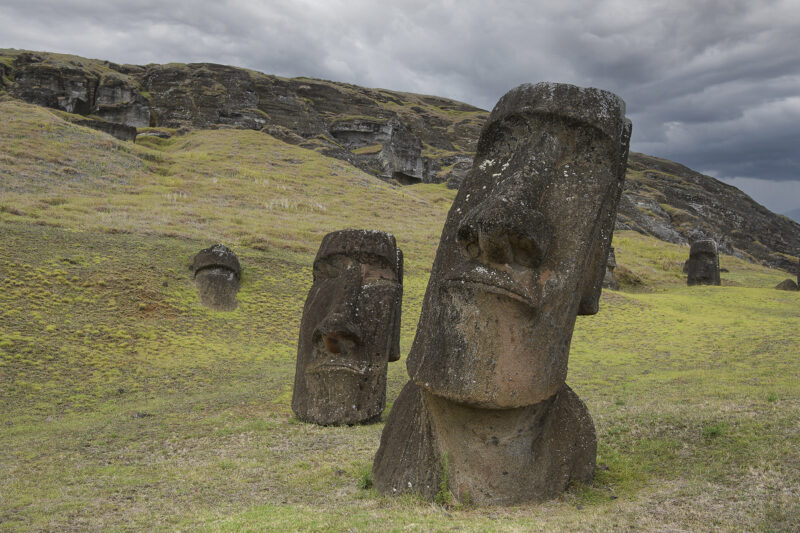
Ahu Tongariki
Ahu Tongariki is easily one of the most beautiful places on Rapa Nui, and the island's largest ceremonial centre. On the ahu, which is 100 metres long, 15 moai stand with their backs to the sea, with Rano Raraku in the background. Tongariki is a fascinating archaeological site, with remains of a boathouse and hundreds of petroglyphs. No wonder it's a photographer's dream spot - especially at sunrise!
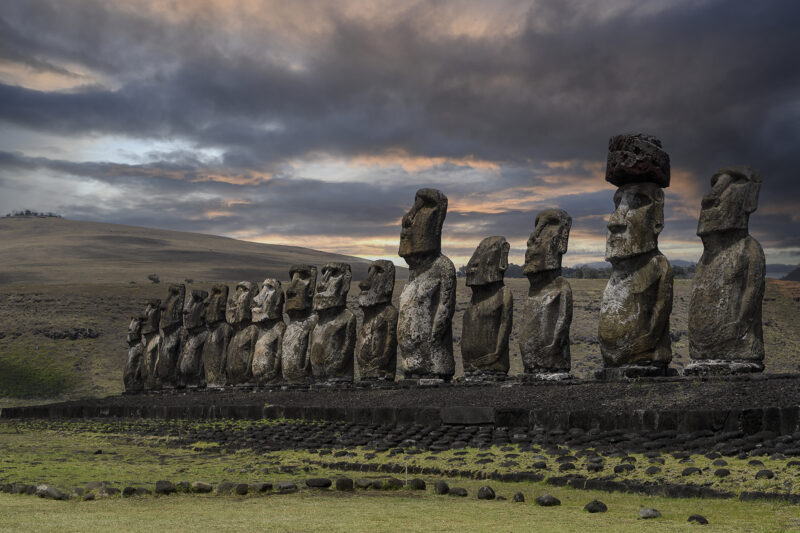
Ahu Tahai
Ahu Tahai is a well-restored site close to the main town of Hanga Roa. There are three ahu here, and each has something unique to offer. Ahu Vai Uri has five moai, Ahu Tahai has a single moai that stands at 4.5 metres tall, and the only moai on Rapa Nui with eyes in addition to a pukao is found at Ahu Ko Te Riku.
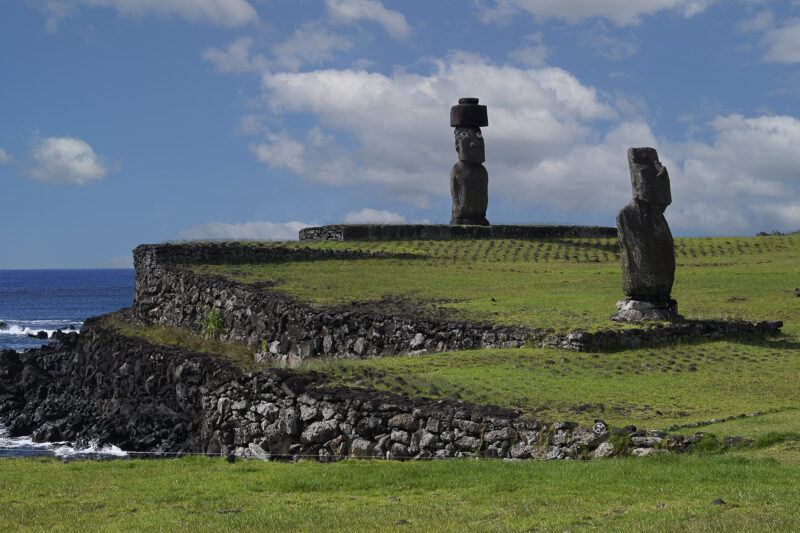
It's a really unique place, especially when the sun is setting.
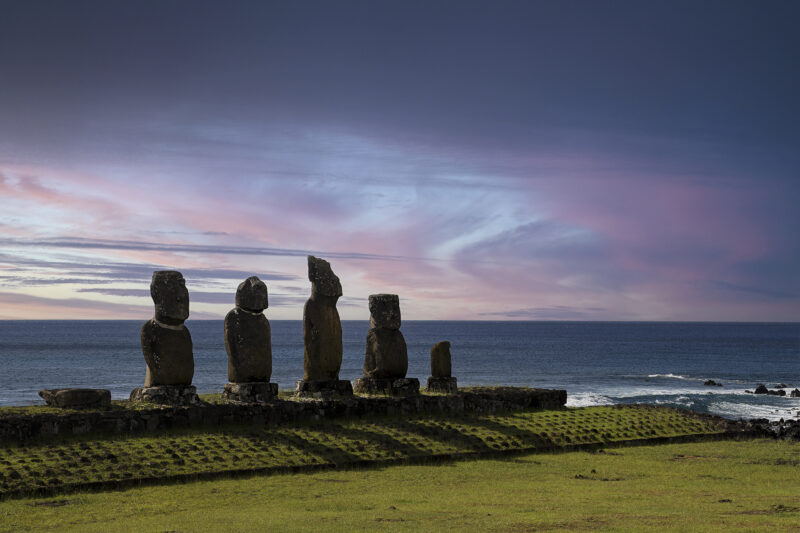
Ahu Nau Nau
On the gorgeous Anakena beach is Ahu Nau Nau, one of the most beautiful ahu on Rapa Nui with seven moai. Four of the moai have a pukao on their head and are almost fully intact. Drawings decorate the ahu wall and the torsos of the moai.
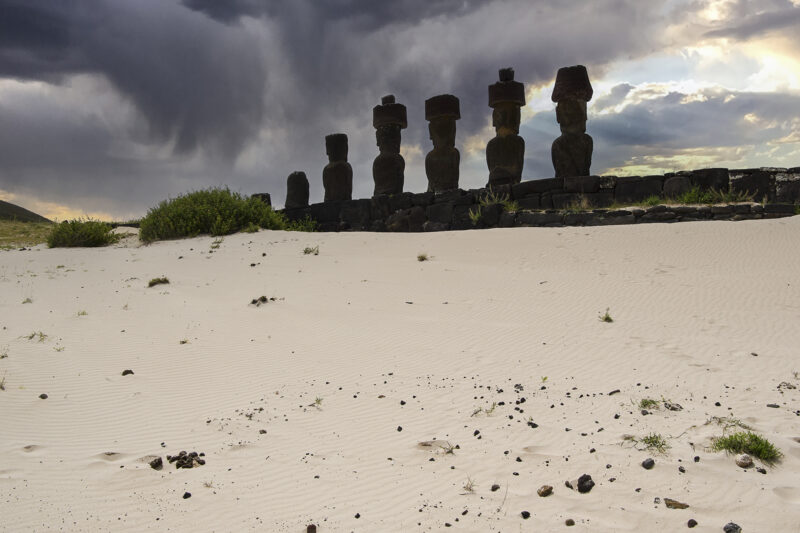
Ahu Akivi
Ahu Akivi is a bit further inland and was the ceremonial site of one of Rapa Nui's most powerful clans. The moai date from the 15th and 16th centuries and are the only ones that face the sea because the village was originally located between them and the ocean.
Must-see 3: Orongo and the Tangata Manu
Orongo was a ceremonial village with 54 houses. It was closely linked to the Tangata Manu, or Birdman cult. This was an annual contest where the island's leader was chosen. The village is located on the edge of the Rano Kau crater and looks out over Motu Nui.
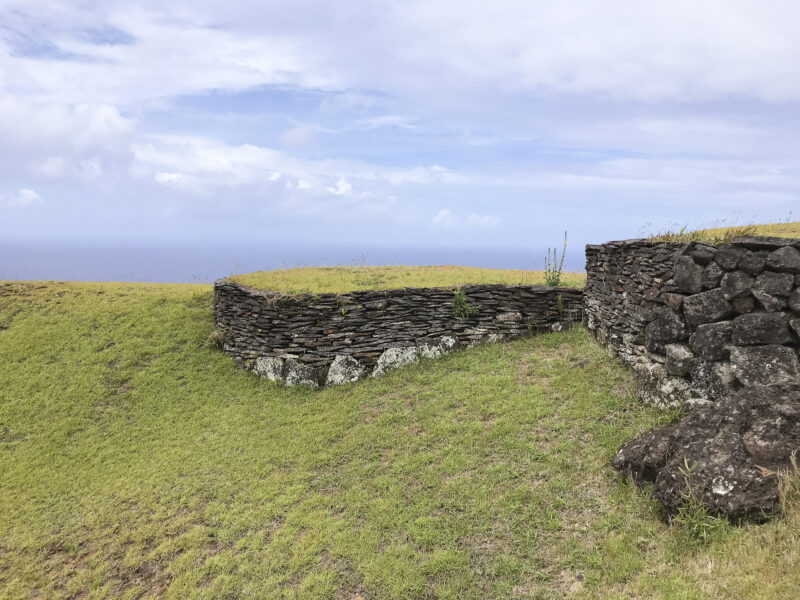
Motu Nui
Just off the coast of Rapa Nui, opposite Rano Kau, you'll find three small rocky islands in the surf. The largest and furthest away of the three is Motu Nui. Every spring, the manutara, or white-tailed tern, used to come here to lay its eggs.
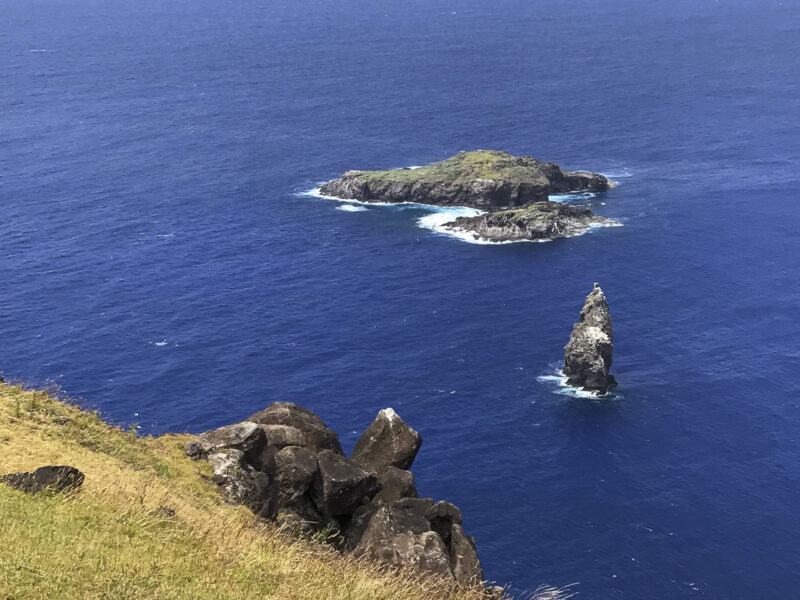
Tangata Manu or Birdman competition
The Birdman cult came about during a time of ongoing tribal conflicts on the island of Rapa Nui. The competition, which was held every year, decided who would become leader of the Rapa Nui people for the following year.
To get ready for the competition, the contestants from each tribe lived in Orongo for a short time. The race started when the white-tailed terns' breeding season arrived. The competitors went down the 300-metre-high steep cliffs and crossed the dangerous surf to Motu Nui on a plank made from totora reeds or by swimming. There, they waited for the birds to arrive. Whoever managed to get the first egg laid by the birds, stuck the egg firmly to his head and went back the way he came, winning the race. He then presented the egg to his tribal leader, who became the new ruler of the Rapa Nui people. To mark the achievement, a carving was made on the rocks at Orongo showing a human figure with the head of a bird.
The competition was so dangerous and challenging that a lot of the participants died during the event. Then in 1864, when the missionaries arrived, the competition was abolished.
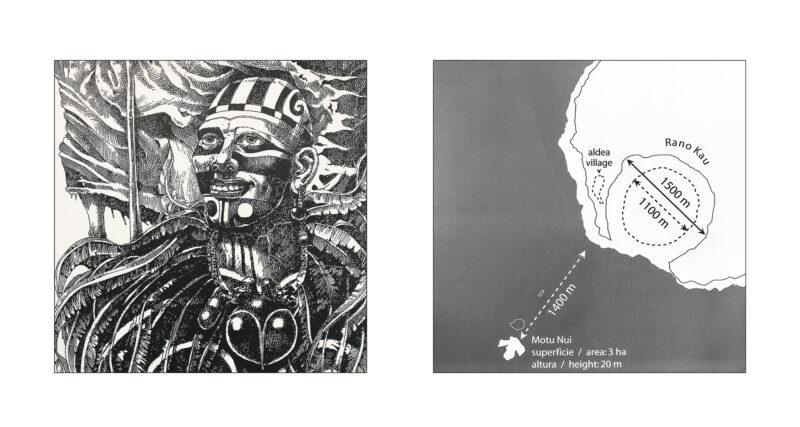
Must-see 4: the caves of Rapa Nui
Apart from the giant moai statues, Rapa Nui is also home to an impressive volcanic cave system that runs for seven kilometres. So far, 800 caves have been catalogued, and it's thought there could be at least 1,000 more to explore.
How did the caves form?
Over the course of numerous successive volcanic eruptions, the emitted gases became trapped between the various lava flows. As the lava cooled, these gases left big holes and long corridors. Rainwater filtered through the porous rock, which led to the formation of underground deposits. The volcanic caves were used by the people of Rapa Nui as dwellings and storage areas.
Ana Te Pahu is the island's biggest cave. It has a number of rooms, all connected by a series of volcanic corridors. One of the rooms has a water reservoir and looks like something you'd expect to find in a subtropical paradise.
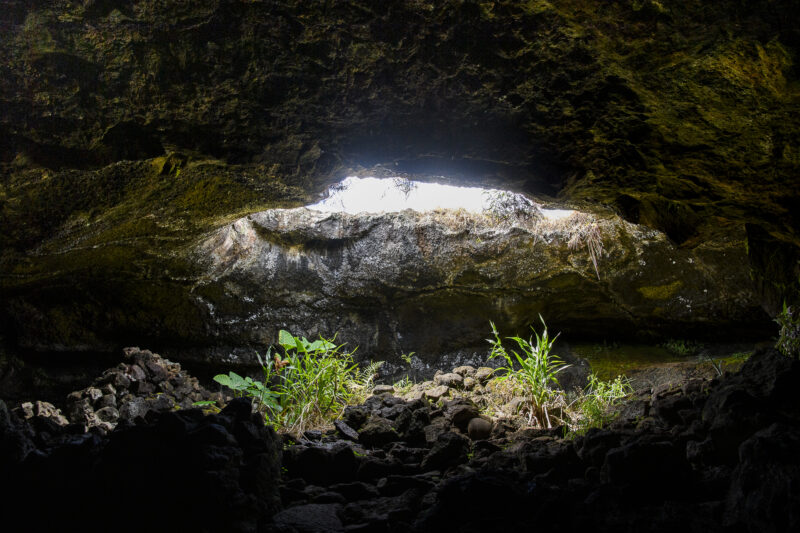
Travelling to Rapa Nui, a few tips
I've got some great tips to help you plan that trip to Rapa Nui!
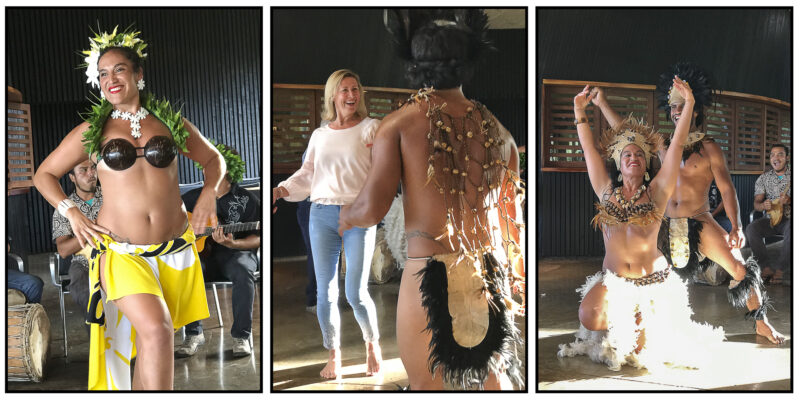
How to get to Rapa Nui
You can get to Rapa Nui by plane from Santiago in Chile or from Tahiti's capital, Papeete. The flight from Chile takes about five and a half hours. You'll arrive at Mataveri International Airport after an exciting approach to the airport's short and only runway. Or you can hop on a cruise through the South Pacific and visit Rapa Nui as part of the itinerary.
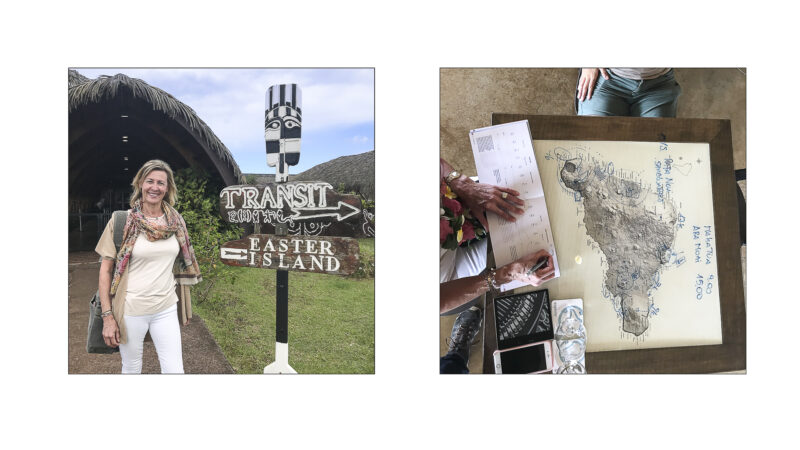
What is the best time to visit Rapa Nui?
Rapa Nui has a subtropical climate, with an average temperature of 21°C all year round. There is no real rainy season, so the island is great to visit any time of the year. There is a constant, gentle sea breeze, and you can expect a short, heavy downpour at any moment. The high season is January to February, which is summer in the southern hemisphere.
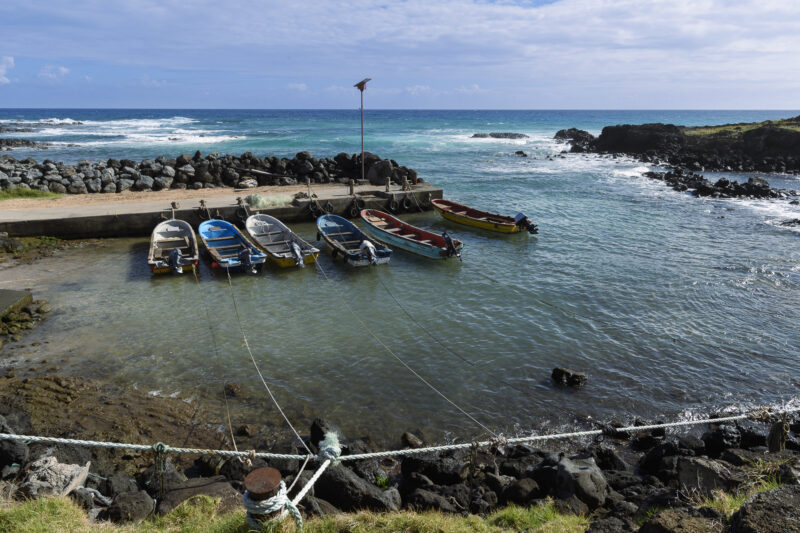
How many days do you need on Rapa Nui?
Most people stay on Rapa Nui for three days, but if you want to take it easy, five days is perfect.
Can I travel around freely on Rapa Nui?
You can get around Rapa Nui by car or bike, but if you want to visit the national park, the biggest ahu and the archaeological sites, you'll need to go with a local guide.
What should I wear?
If you're heading to Rapa Nui, be sure to pack some outdoor gear. You'll definitely need sturdy shoes for walking on the sharp volcanic rock. Pack shorts, T-shirts, a rain jacket, sunglasses, sunscreen, hiking trousers, a thin fleece, swimsuit, sandals and a small backpack.
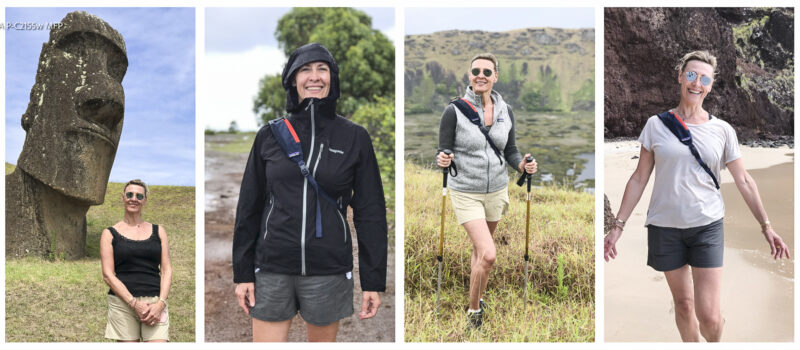
Where to stay?
We stayed at Explora Lodge, an eco-friendly hotel not far from Hanga Roa. Made up of a series of low wooden structures, Explora Lodge fits right into the island's rugged landscape. The lounge and other shared areas have a chill and comfy vibe. The rooms are decorated with light-coloured wood and natural tones. The all-inclusive package includes yummy food, excursions led by expert local guides and Polynesian entertainment.
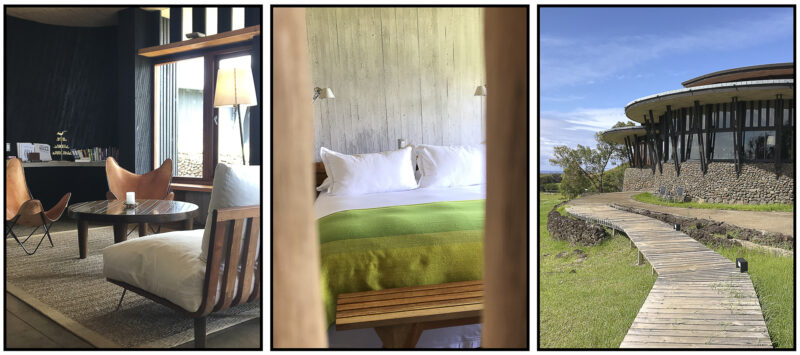
Hiva, the magical land of King Hotu Matu'a, is probably one of the Marquesas Islands. This piece of paradise on earth is waiting for you in the beautiful archipelago of French Polynesia.